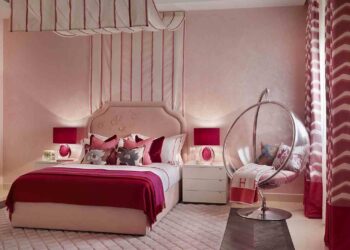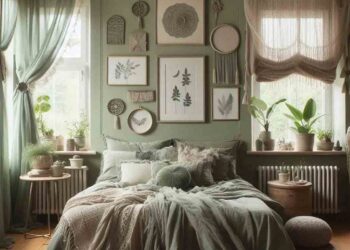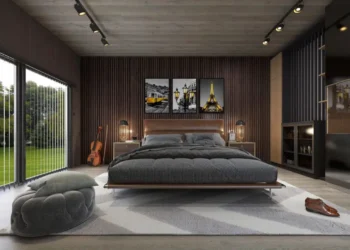The rustic sage green kitchen cabinets feel like taking a deep breath of fresh mountain air. This color instantly creates a peaceful, grounded vibe. Sage green, a soft, muted green with gray undertones, connects your kitchen to nature. It’s not like other bright colors, but it keeps calm vibes.
The beauty of rustic sage green cabinets is that they strike a perfect balance between rugged texture and refined elegance. Like wood paired with the sage tone, it’s like charm meets sophisticated.
Adding natural textures like stone countertops or exposed beams takes things to another level. Brass hardware gleams against the sage backdrop, while open shelving displays pottery. It’s a mix of elements that turns a plain kitchen into a timeless one.
We’re about to walk through 23 stunning rustic sage green kitchen cabinets ideas that’ll make you feel inspired.
So, get ready for the kitchen update. Ready to see how sage green can transform your kitchen space. Let’s go and find out the best one for you.
What color walls go with sage green cabinets?
Wondering what wall color to pair with dreamy sage green cabinets then you’ve got many options.
Cream and soft white walls are the best because they create a clean backdrop that lets your sage cabinets shine. The contrast is gentle but distinct, it makes your kitchen feel bright and open.
Warm neutrals like taupe and muted beige are what you can consider too. They give the earthy quality of sage green and create a cozy, welcoming vibe that’s perfect for the space. These colors feel naturally connected to sage.
A warm gray with the hint of purple undertones. It may sound weird, but it brings out the gray undertones in sage green in a beautiful way.
Just grab paint samples and place them near your cabinets. Live with them for a few days to see how they look in different lighting. The right wall color will make your sage cabinets glow.
23 Rustic Sage Green Kitchen Cabinets for Serene Transform
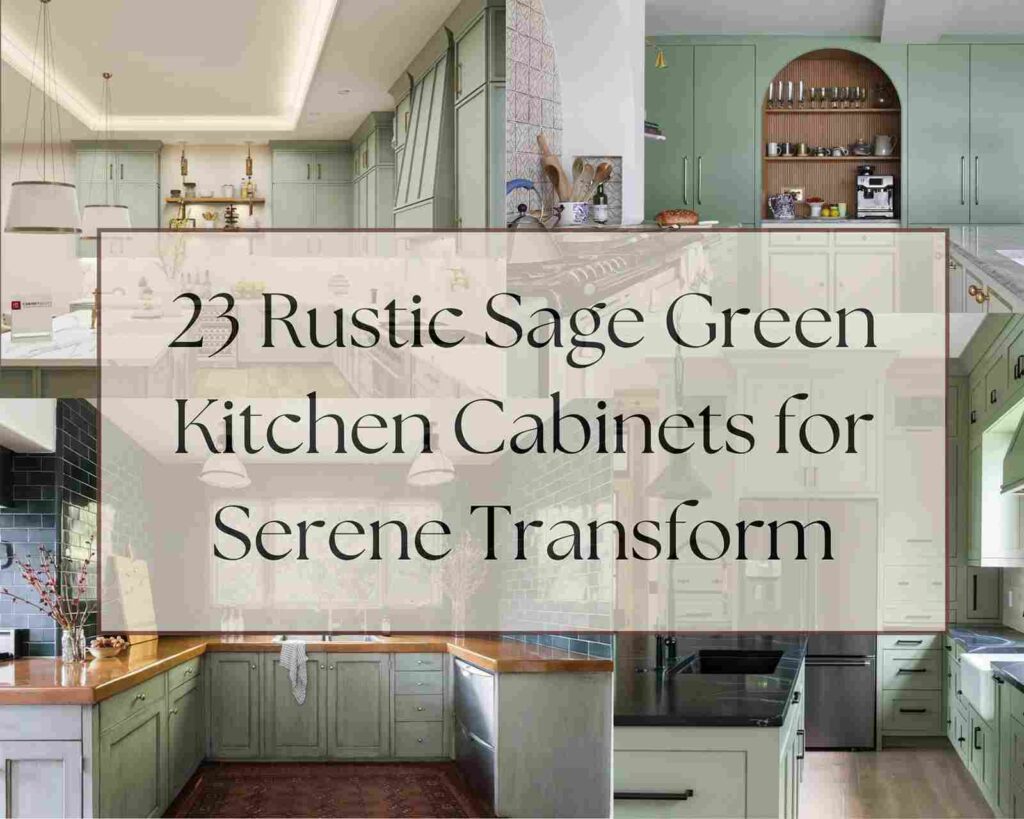
These 23 designs showcase how versatile rustic sage green can be. From farmhouse charm to modern country, there’s a sage green kitchen that fits your style perfectly.
Each idea brings something to you whether you’re looking to make a bold statement or create a subtle, nature-inspired retreat. These rustic sage green kitchen cabinets will inspire you in some way.
So, let’s dig into it and pick out the finest one for your kitchen.
Sage green kitchen with two-tone walls
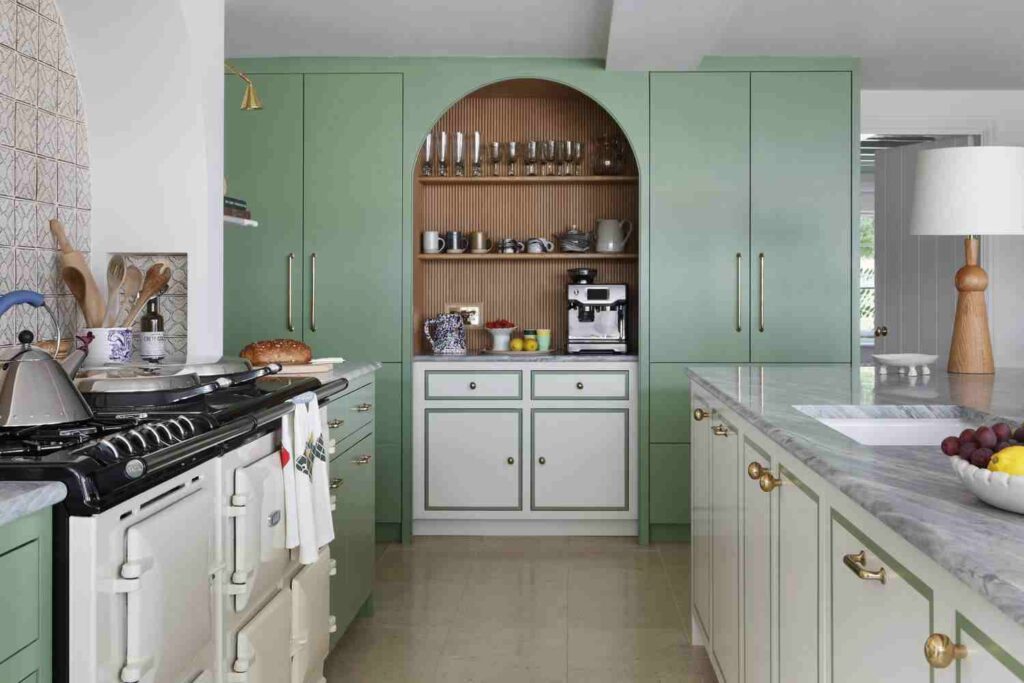
Two-tone walls paired with sage green cabinets is kitchen magic. Contrasting sage cabinets against white walls on top to a matching sage on the bottom. This technique makes ceilings appear high while creating a cozy, wrapped-in-color feeling.
Getting this look right means finding the perfect dividing line. Try using a chair rail or thin wooden trim piece to mark the point between colors. Paint the lower portion the same sage as your kitchen cabinets with white or cream.
Make sure both paint finishes match either both matte or both satin. This two-tone technique works well in small kitchens that need visual interest without feeling cramped. Plus, the low wall section hides scuffs and splashes better than plain white would.
Contrast navy blue with sage green
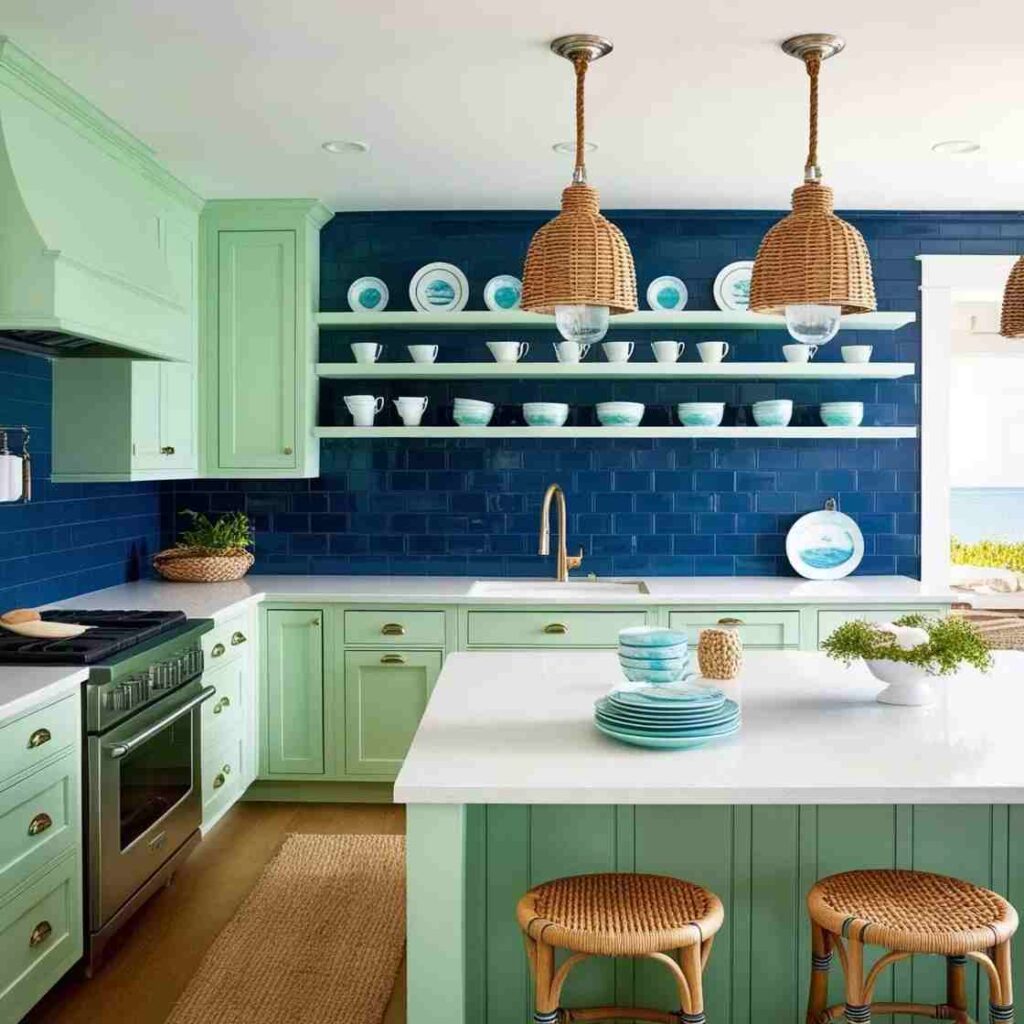
Navy blue with sage green together are basically royalty. This color combo packs a visual punch while feeling sophisticated. Think sage green cabinets with a navy blue surface, or navy walls with sage cabinetry. The contrast is bold but not harsh – both colors have that same grounded, nature-inspired quality.
To nail this look, keep everything else simple. White countertops provide breathing room between the two colors. Wood accents like floating shelves help bridge the color gap. For hardware, stick with either brass for warmth or matte aesthetic black for definition.
I’m a fan of using navy as an accent wall behind sage green shelving. The dark backdrop makes white dishes and glassware pop while the sage keeps things from feeling dramatic. It’s the perfect balance for a character without going over the top.
Pair sage green with white kitchen cabinets
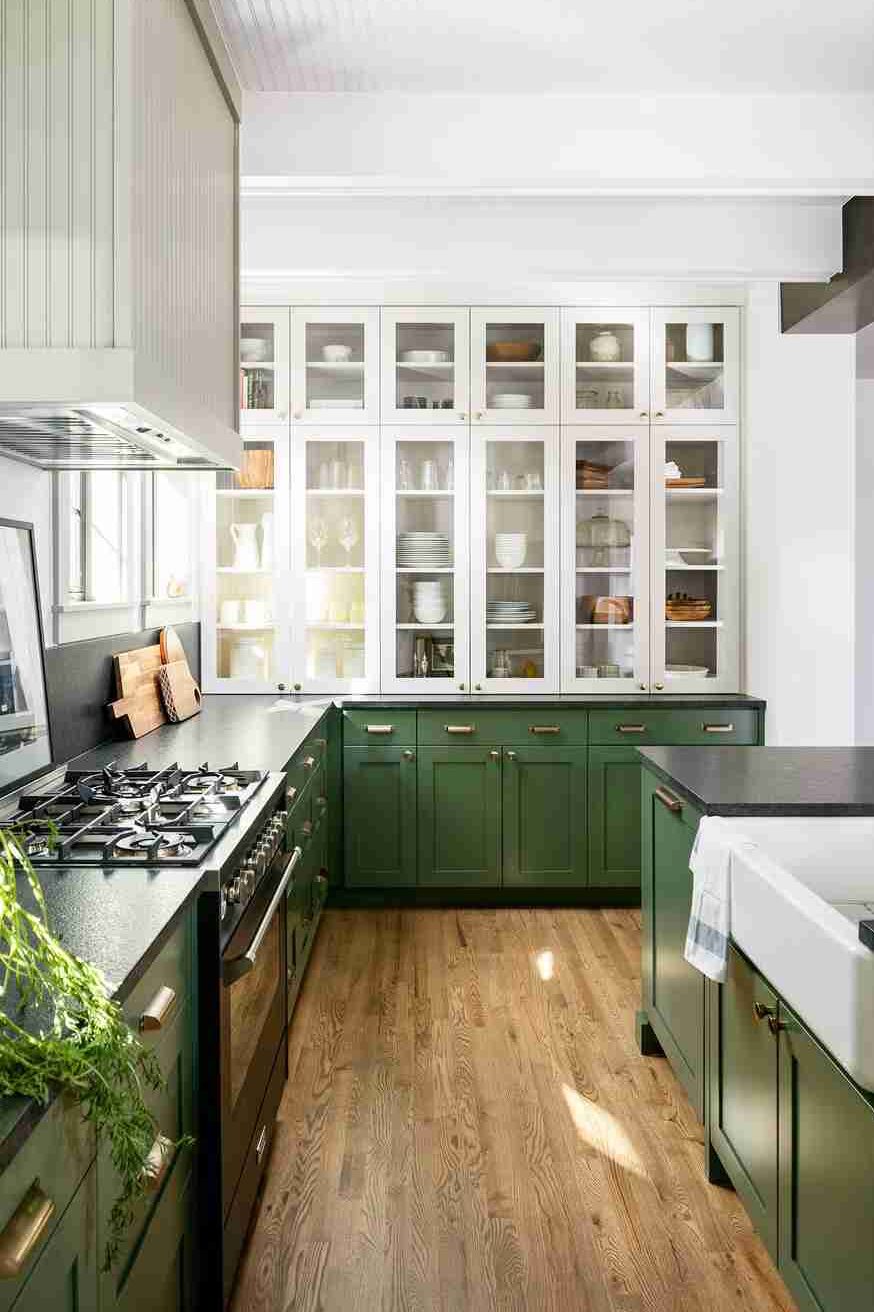
Sage green and white cabinets together create that perfect balance of color and brightness. This combo gives you the serene quality of sage without committing to all-green. I love seeing bottom cabinets in sage with white uppers, it grounds the space while keeping areas light and airy.
Making this two-tone cabinet approach work is all about consistency. Keep countertops the same, white marble or quartz looks amazing against both colors. Your hardware should match across cabinets too, with brass or black providing definition against the sage and white.
Add some sage green tile as a backsplash behind your white uppers. It creates a color story that ties everything together or you can consider the opposite one too like sage uppers with white flowers for a unique look that feels balanced.
Farmhouse wood surface with sage green hues
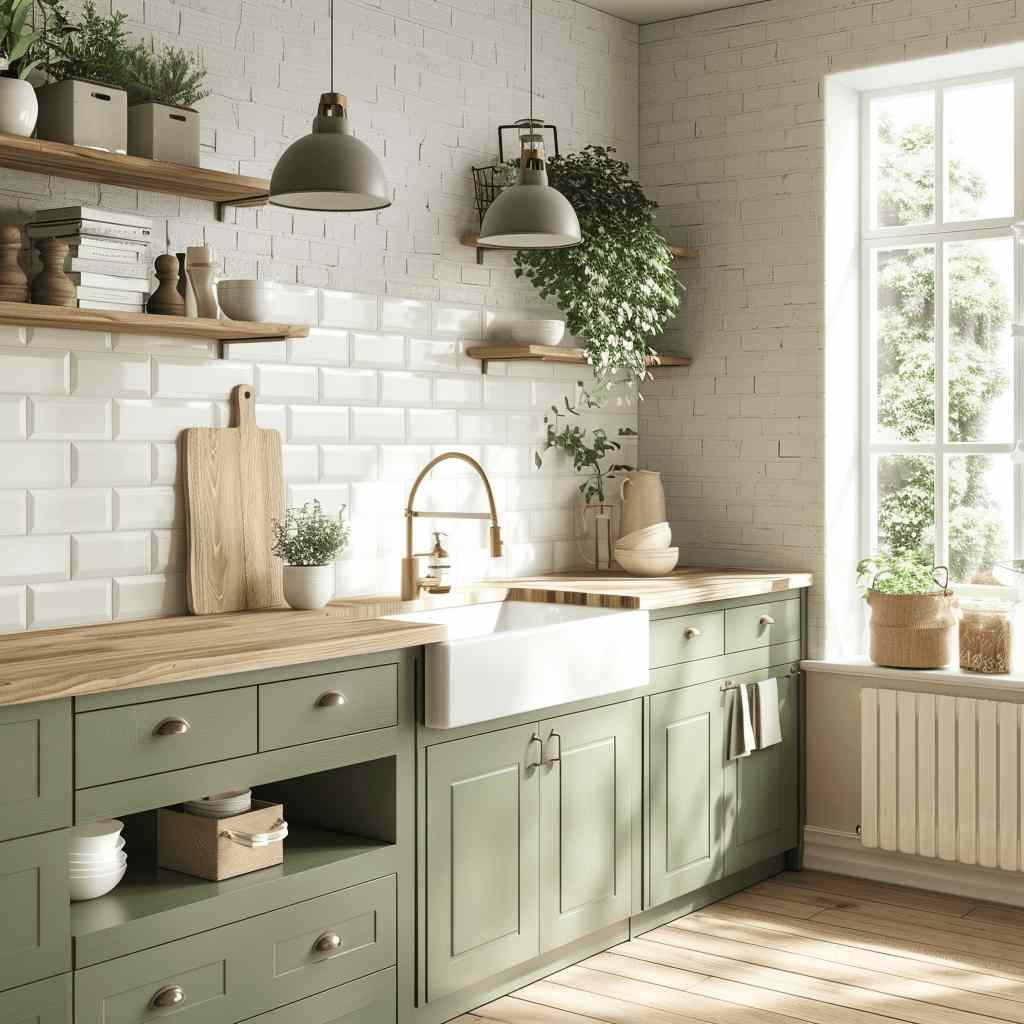
Warm wood surfaces and sage green cabinets. A butcher block counter or island top against sage cabinetry creates this amazing warm-cool balance that feels both rustic and refined.
To get this look right, choose woods with golden or medium brown tones like oak, pine, and reclaimed woods. You want a grain pattern to add character, but not so much that it goes against the color scheme. For flooring, the same wood tone throughout creates cohesion, or stone tiles in warm beige for contrast.
I absolutely love adding a wood open shelf or two against a sage green wall. It breaks up the color while displaying the features. If you’re feeling fancy, a wood range hood above your stove can be a focal point. This combo never goes out of style it’s like nature inspired.
Sage green cabinets with vintage hardware
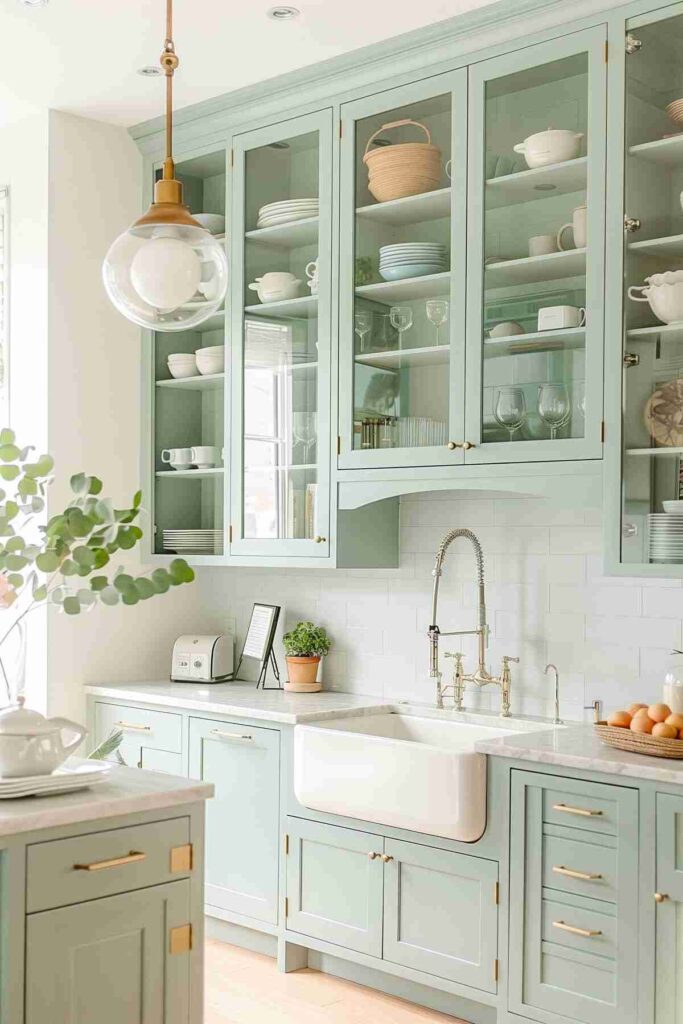
Vintage hardware on sage green cabinets creates an amazing vintage look. Think aged brass bin pulls, glass knobs with brass backplates, or hammered copper handles they all pop against the muted sage background. The vintage hardware gives cabinets character and history.
Installing vintage hardware is simple, make sure to measure your existing drill holes before shopping. Antique stores and online marketplaces are best for unique pieces. Don’t worry if they don’t all perfectly match. A mix of styles looks authentic than perfectly matched sets.
My favorite approach is using large statement hardware on the lower cabinets and delicate pieces. The visual weight feels balanced that way. Also, don’t forget cabinet hinges, switching to vintage-style hinges completely changes the look.
Combine brass sink with sage green
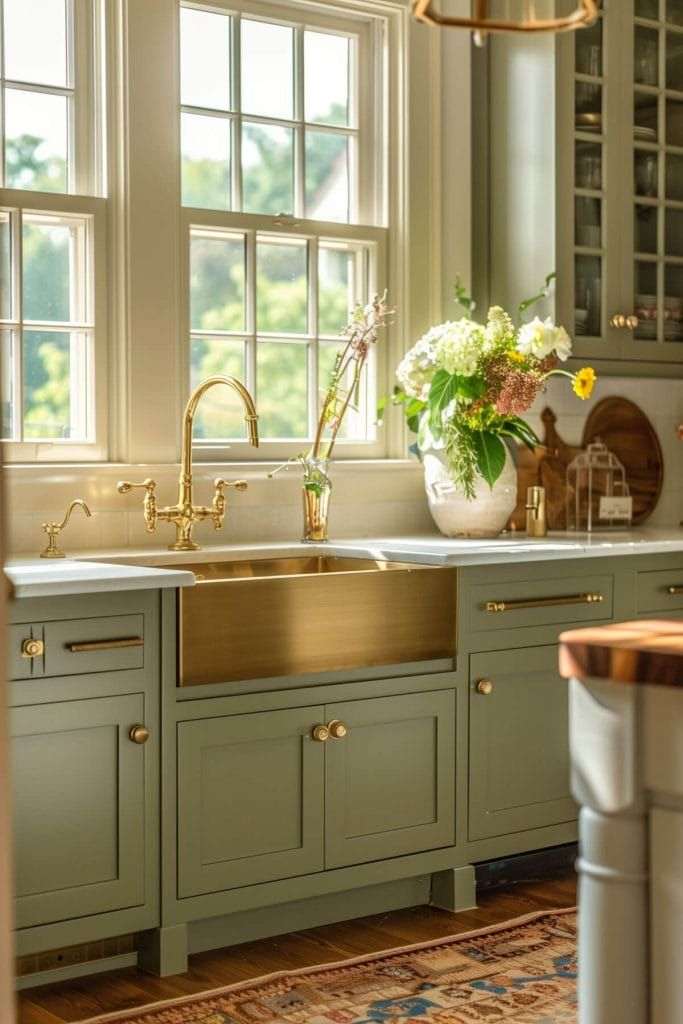
A brass sink paired with sage green cabinets is the best detail for the kitchen. This combination oozes warmth and vintage charm while giving luxury. The rich gold tones of the brass goes against the muted sage background, creating this focal point that draws the attention.
Getting this look right means committing to brass, real brass develops a living patina over time. For maintenance, look for brass-finished stainless sinks that give you the look without the upkeep. Farm sinks in brass make the statement, but a standard one in brass finish looks amazing too.
Carry the brass theme through your faucet and cabinet hardware for cohesion. But don’t go too much brass because it can start looking like a 1980s. Keep other metals in the space to a minimum, letting the brass sink be your showstopper.
Mix sage green with wood shelving
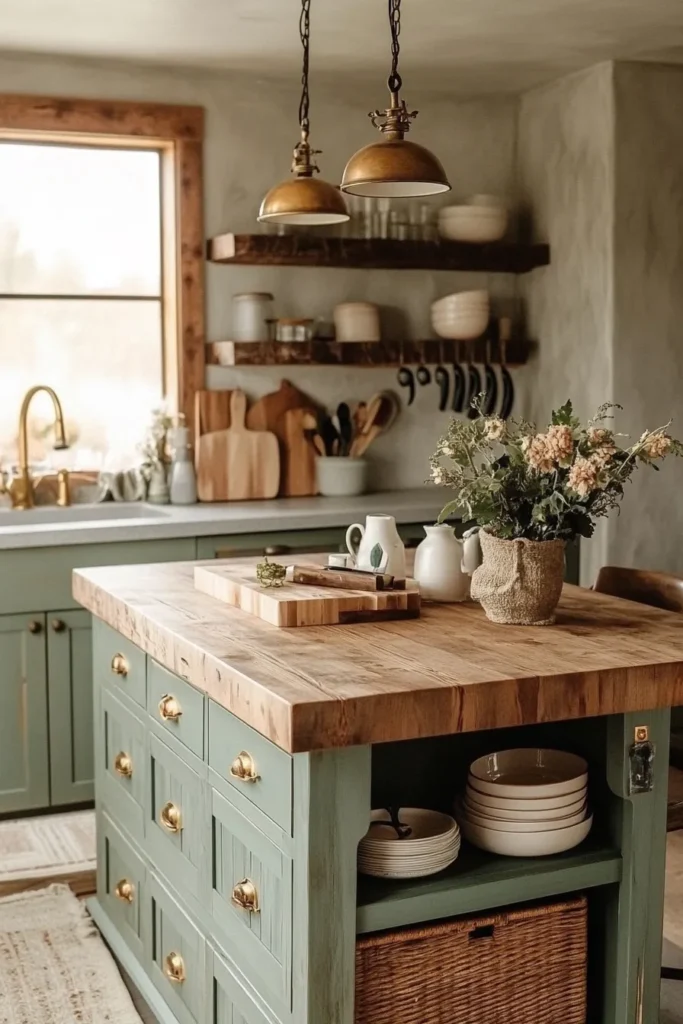
Wood shelving against sage green walls or cabinets creates this amazing texture. The natural grain patterns of wood bring warmth and character that balances out the contrast. I love seeing floating oak shelves replacing upper cabinets it opens up the space adding natural elements.
Installing wood shelving is easy and simple too. For a rustic look, try rough-hewn wood with visible marks or reclaimed barn wood with a simple clear coat. If your style leans refined, consider white oak or maple with rounded edges. Make sure to properly seal wood shelves to protect it from moisture.
My favorite approach is asymmetrical shelving, one wall with open shelves and the rest with full cabinets. This gives you display space without sacrificing storage. Style these shelves with white ceramics, glass jars of pantry staples, and small plants. The items pop against the sage background while the wood shelves tie everything together.
Install a wood-butcher wooden block

A wood butcher block in a sage green kitchen adds amazing warmth and functionality. Whether it’s an entire countertop or an island top, the golden tones of the wood create contrast against the sage cabinets. Plus, it brings that authentic rustic feel.
When choosing a butcher block, maple and oak are kitchen workhorses, durable and beautiful. Make sure to properly seal it with food-safe oil that you’ll refresh. For a truly functional surface, go with end-grain construction which stands up better to knife work and shows few scratches.
I particularly love a butcher block with sage green cabinets and pendant lights hanging, it creates a gathering spot. The wood ages beautifully, telling the story of family. If you’re worried about maintenance near the sink area, try combining a butcher block on the island with stone counters around the perimeter.
Bring in brick backsplash

Brick backsplash with sage green cabinets is match made in heaven. The rustic texture and warm terracotta tones of brick create this amazing contrast against the smooth, sage cabinet fronts. It’s like a countryside charm but sophisticated.
Going with this look is easier than you think. Real brick veneer can be installed similarly to tile, or try brick-look porcelain tiles for maintenance. For the cohesive look, choose brick with variation in color, with hints of cream, rust, and brown to create depth than. White-washed brick looks dreamy with sage too.
My favorite thing about this combo is how the brick’s texture makes the sage cabinets appear smooth and velvety. The key is balance here, if you go with a full brick backsplash, keep other elements simple.
Soft grey flooring in dark sage green kitchen
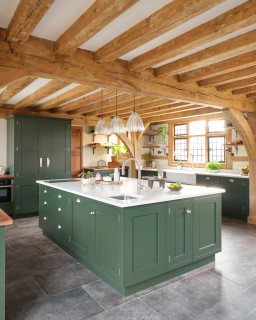
Soft grey flooring anchors a dark sage kitchen makeover looks beautiful, grounded way. The neutral grey creates breathing room without competing with the deep sage cabinets. The result feels both cozy and sophisticated.
For flooring options, grey tile in large formats looks clean and contemporary, while slate brings natural texture. Luxury vinyl plank in weathered grey wood tones offers warmth with durability. Whatever material you choose, aim for a grey with minimal undertones.
I recommend keeping the grey fairly light, especially with dark sage cabinets, it prevents the room from feeling heavy or cave-like. Add some light elements up high, like white walls or a white range hood, to balance everything. This color combo creates the perfect backdrop for both silver and brass accents, giving you flexibility with fixtures and hardware.
Texture with limestone countertops
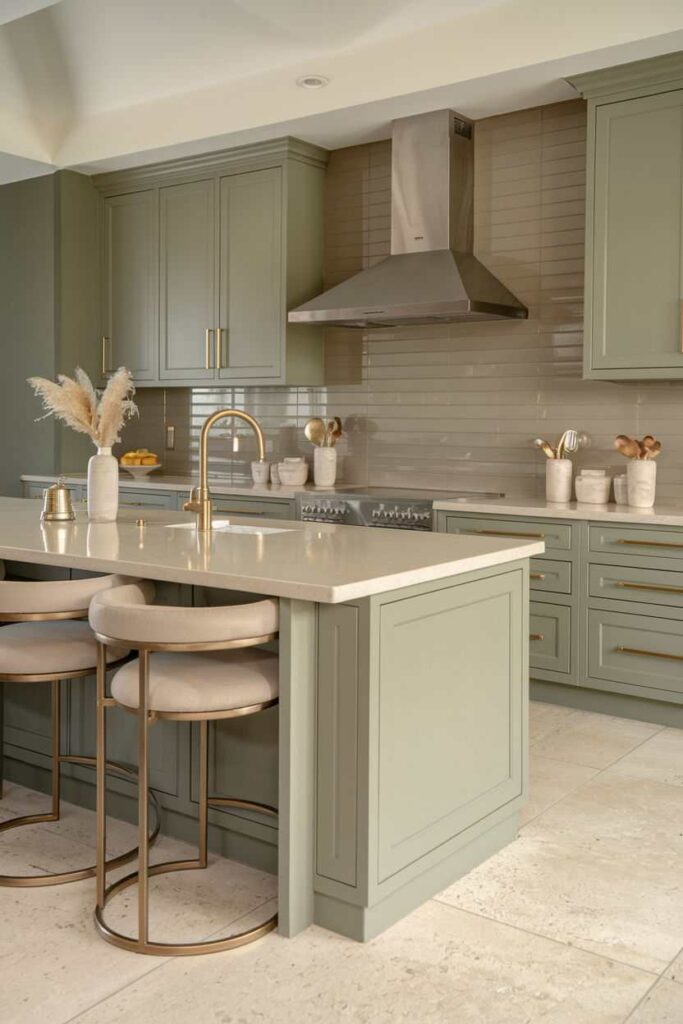
Limestone countertops paired with sage green cabinets create this amazing organic vibe. The natural, pitted texture of limestone adds depth while its creamy color softens the look. This combo feels like it was plucked straight from a French countryside kitchen rustic but refined.
When selecting limestone, look for honed finishes rather than polished, they have that perfect matte quality that complements rustic sage cabinets. For a similar look with less maintenance, some quartz options mimic limestone beautifully.
I absolutely love the subtle variations in limestone, no two slabs are similar. This natural quality makes your kitchen feel one-of-a-kind. To really highlight both materials, keep your backsplash simple, a cream subway tile or painted drywall. This lets your sage cabinets and textured counters stand out perfectly.
Under-cabinet LED strip light for ambiance
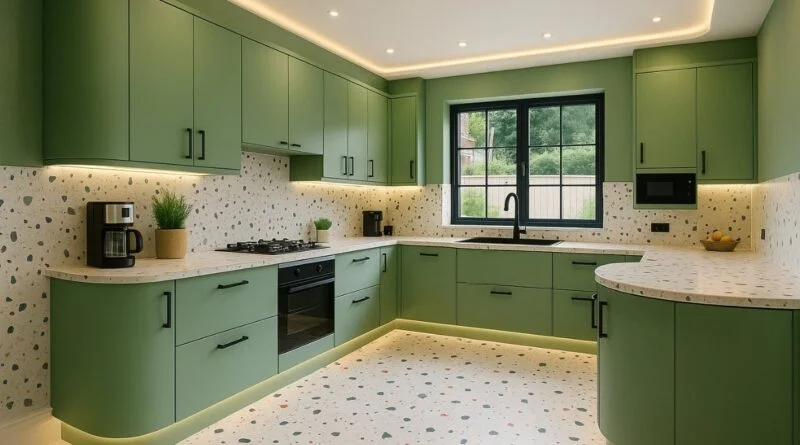
Under-cabinet LED lighting makes sage green cabinets glow. These subtle light strips create an ambient effect, highlighting the cabinet color while providing task lighting for prep work. The soft illumination brings out the beautiful undertones in sage.
Installing LED strips is simple, most are peel-and-stick with simple connections to a power source. The key is choosing the right color temperature: aim for warm white rather than cool white or daylight. The warm tones complement sage green much better and create an atmosphere.
Put these lights on a dimmer switch. Full brightness works for cooking and cleaning, while dimmed lights create the perfect evening ambiance. I also love how under-cabinet lighting makes countertops sparkle like natural stone or quartz with bits of shimmer.
Go bold with black accents
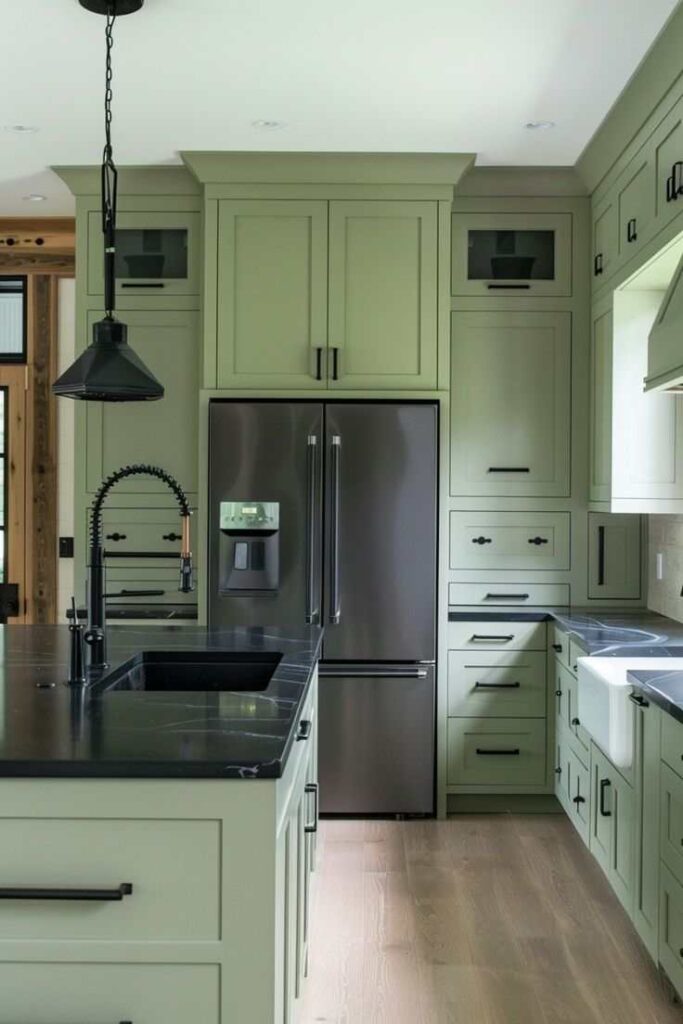
Black accents against sage green cabinets create this striking, modern-rustic vibe. The contrast is bold without being harsh since sage naturally has gray undertones that compliments black. Think matte black hardware, faucets, lighting fixtures, or a statement range, they all pop against the sage background.
Getting this look right means being strategic with your black elements. Matte black finishes look rustic and integrated than shiny black. For hardware, chunky black pulls on drawers and simple black knobs on doors create a cohesive but interesting look.
I love black-framed windows or a black range hood paired with sage cabinets. These large black elements create focal points that draw the eye. Black should be your accent, not competing for attention with your beautiful sage cabinets. Keep countertops light to prevent the space from feeling too dark. This high-contrast pairing feels current yet classic.
Rustic charm with green beadboard cabinets

Beadboard detail on sage green cabinets cranks up the charm factor. Those vertical lines add texture and interest while maintaining a rustic cottage vibe. When painted in soft sage, beadboard cabinets create this vintage feel that looks collected and curated.
For authentic beadboard character, look for cabinet doors with real wood beadboard panels rather than molded versions. The imperfections in real wood add to the rustic appeal. This style works on full cabinet fronts or on the center panels style doors for a subtleness.
My favorite way to style beadboard sage cabinets is pair them with a white subway tile backsplash. Add vintage-inspired bin pulls or glass knobs to enhance the nostalgic feel. The texture of the beadboard means your cabinets cast subtle shadows throughout the day, giving them visual depth that flat-front cabinets can’t have.
Light sage green with copper accents
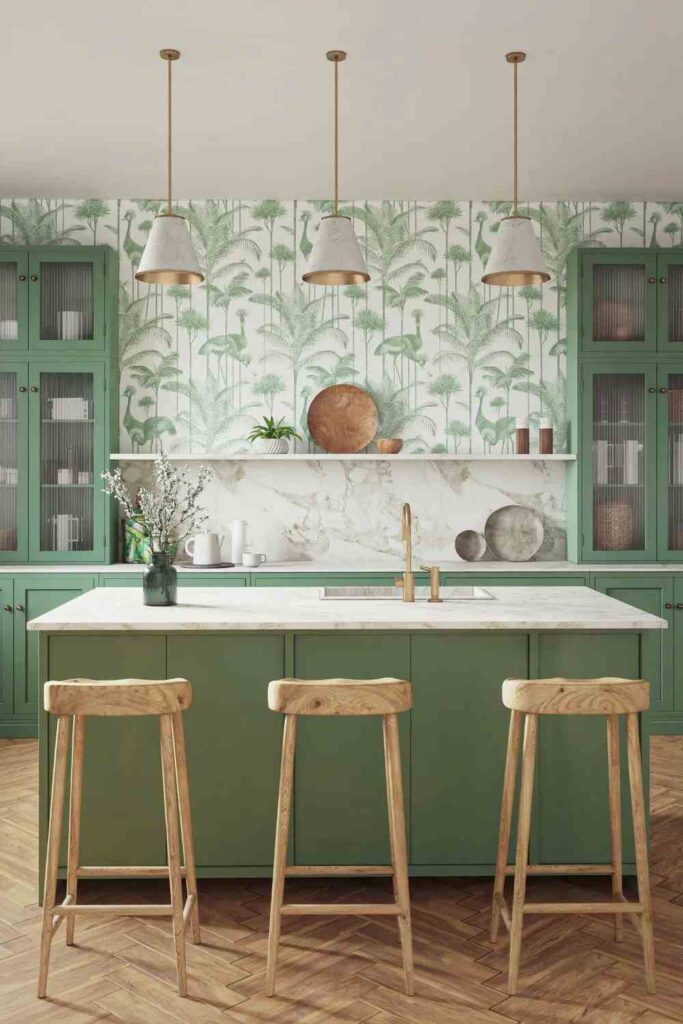
Light sage green cabinets with copper accents create the warm, inviting kitchen vibe. The rosy glow of copper pops against the sage background, while both materials share this natural, earthy quality. Think copper pendant lights, a statement sink, or simple hardware.
For the striking effect, choose weathered copper with natural patina rather than shiny new copper. The blue-green patina that develops contains similar tones to sage, creating this amazing color connection. For fixtures and hardware, copper will develop character or choose “antique copper”.
I’m absolutely in love with copper cookware displayed on open shelving against sage green walls, the color combo is perfect. Make sure to be strategic with your copper elements. My rule is three copper moments like pendant lights, cabinet pulls, and a couple of displayed pots. This gives you that warm metallic touch without being too much.
Frost-glass panels with sage green
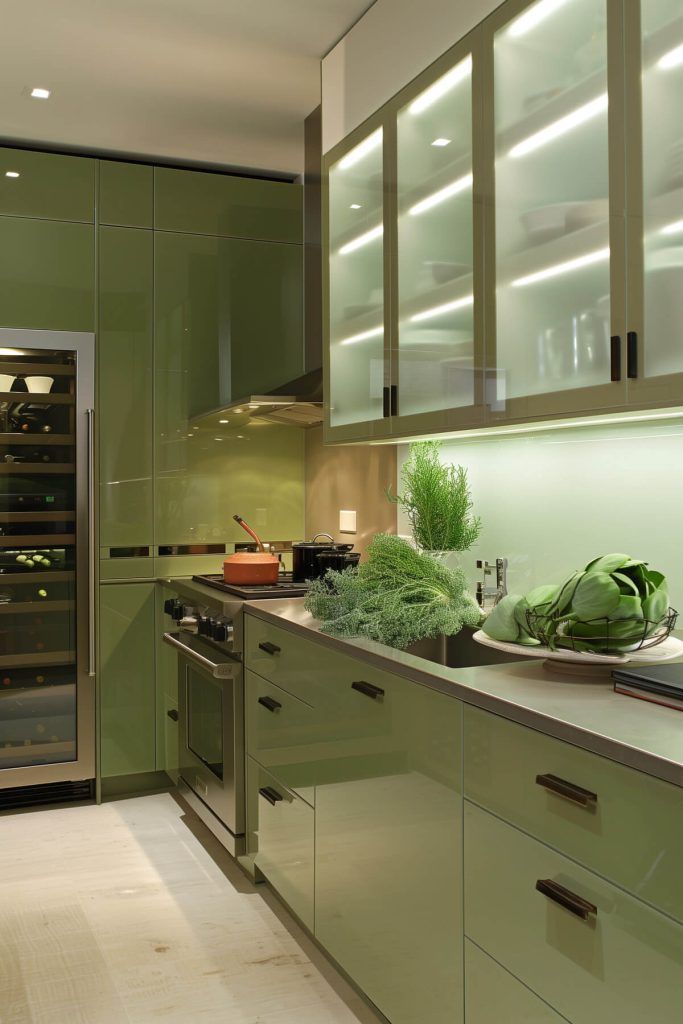
Frosted glass cabinet panels set in sage green frames create a light-filtering effect. The frost glass softens the solid blocks of color while hiding cabinet contents and the result is airy yet private, with beautiful depth.
When planning glass-front cabinets, choose strategic points like the uppers flanking a window or a standalone pantry cabinet. Full frosted glass doors look stunning, but small glass panels at the top of cabinet doors add architectural interest.
My favorite approach is mixing cabinet styles like frosted glass fronts with the sage. This creates visual breathing room without sacrificing too much. Add soft lighting inside glass cabinets for a magical glow that highlights both the glass and the sage frames.
Blend sage green with grey undertones
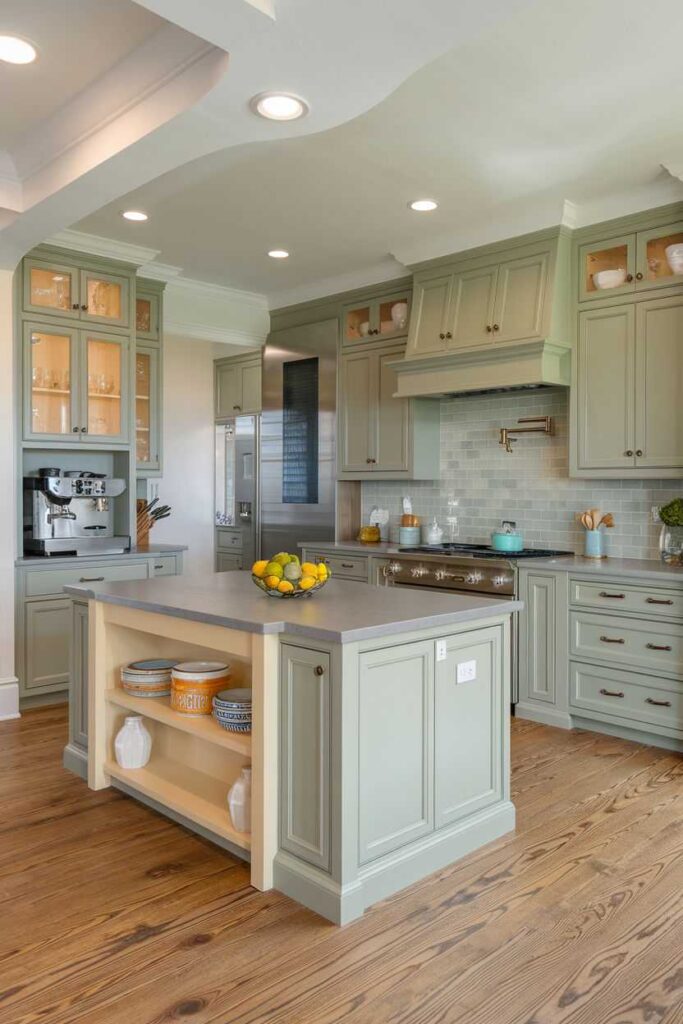
Sage green with gray undertones is the sophisticated approach in the green cabinet designs. This complex color shifts beautifully in different lights, sometimes green, sometimes gray. It pairs with everything and creates this amazing neutral-but-not-boring foundation.
When selecting this shade, look at samples in your kitchen throughout the day. Morning light versus evening light can completely transform the contrast. Benjamin Moore’s “Saybrook Sage” and Sherwin-Williams’ “Clary Sage” hit that perfect green-gray balance.
What I love about gray sage tones is their flexibility. They work with both warm elements and cool ones without clashing. If your style evolves over time, these chameleon-like cabinets will adapt to it. For a current look, paired with white oak accents and matte black hardware, it’s the perfect balance of warm and cool, organic and structured.
Peppy wallpaper against sage green cabinetry
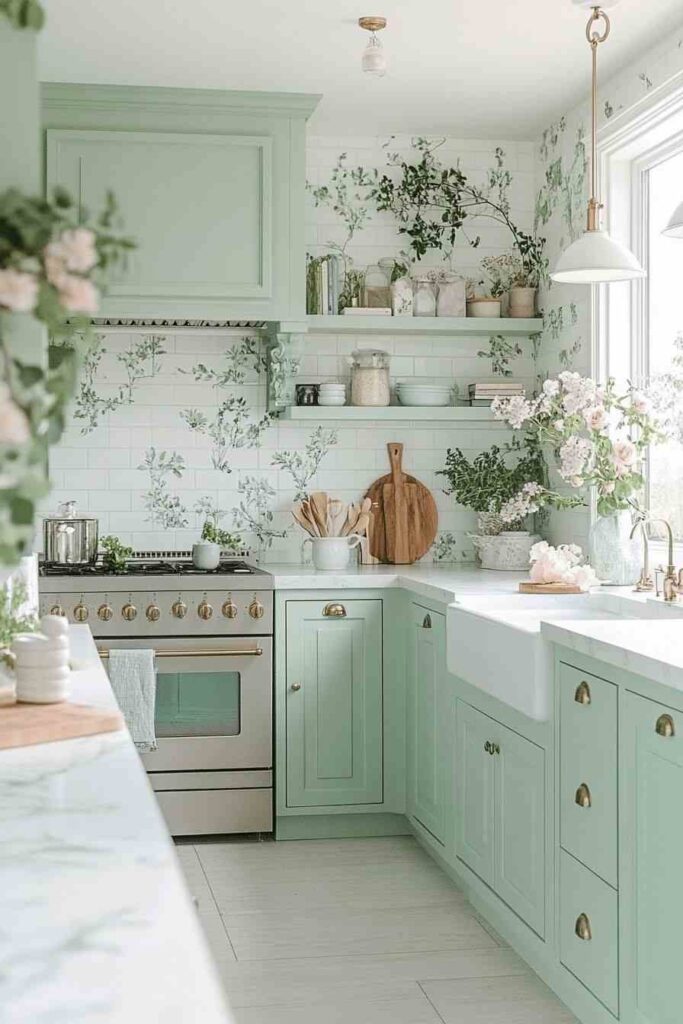
Patterned wallpaper paired with sage green cabinets is unexpected. The calm, muted sage provides the perfect backdrop for a pattern like floral, geometric, or subtle texture, creating this amazing dynamic pattern that keeps it away feeling flat or boring.
Placement is key with this combo. Try wallpaper above sage wainscoting, inside a pantry with sage doors, or as a statement wall behind open shelving. Removable wallpaper makes this easy to switch. Pattern-wise, look for designs that pull in the sage color.
I absolutely love botanical prints with sage cabinets, the connection to nature feels so right. Remember small patterns look traditional, while large, bolder patterns look modern. Make sure your pattern’s background color plays nicely with your sage cream or light taupe backgrounds that usually work. This combo lets you add personality and it’s the perfect mix of safe and spunky.
White shiplap walls with sage green cabinets
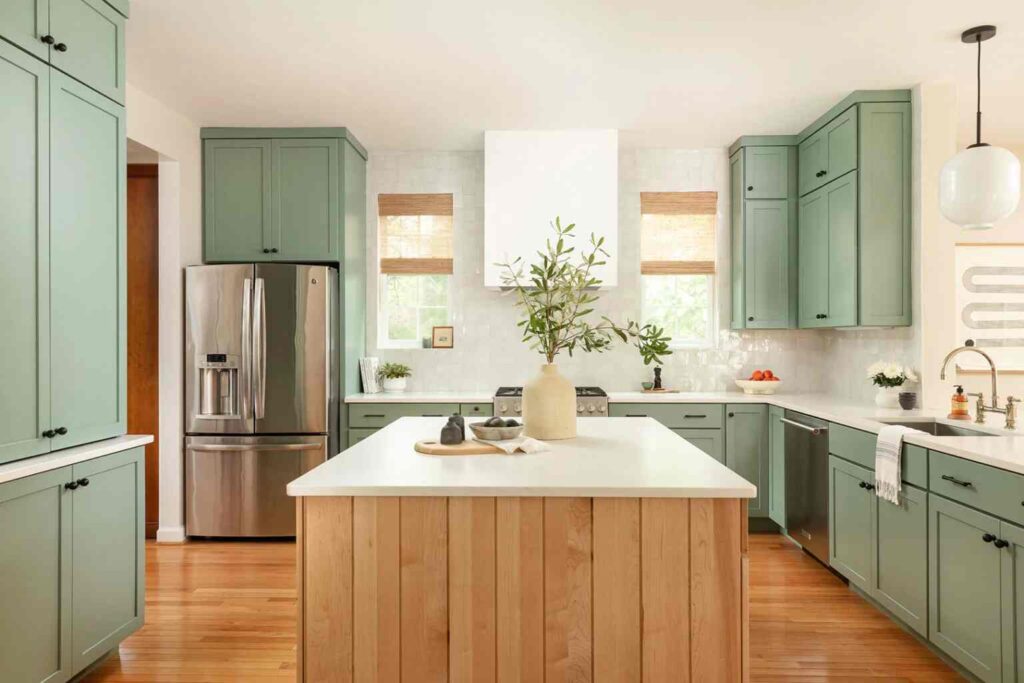
White shiplap walls with sage green cabinets create a cottage vibe. The horizontal lines of shiplap add architectural interest and texture while the bright white makes your sage cabinets pop. This combo feels both classic and current like a modern farmhouse style.
For shiplap character, real wood planks with small gaps between boards create shadows and dimension. The budget-friendly option is grooved panels with the look. Either way, painting them white creates the perfect neutral backdrop for sage to shine.
White shiplap on the walls with a sage green, creates this perfect focal point in texture or try sage lower cabinets with white uppers and continue the white shiplap above, the transition feels natural. Add black iron hardware and a few wood accents for a modern farmhouse look that’s trendy and timeless.
Display terracotta pots for earthy touch
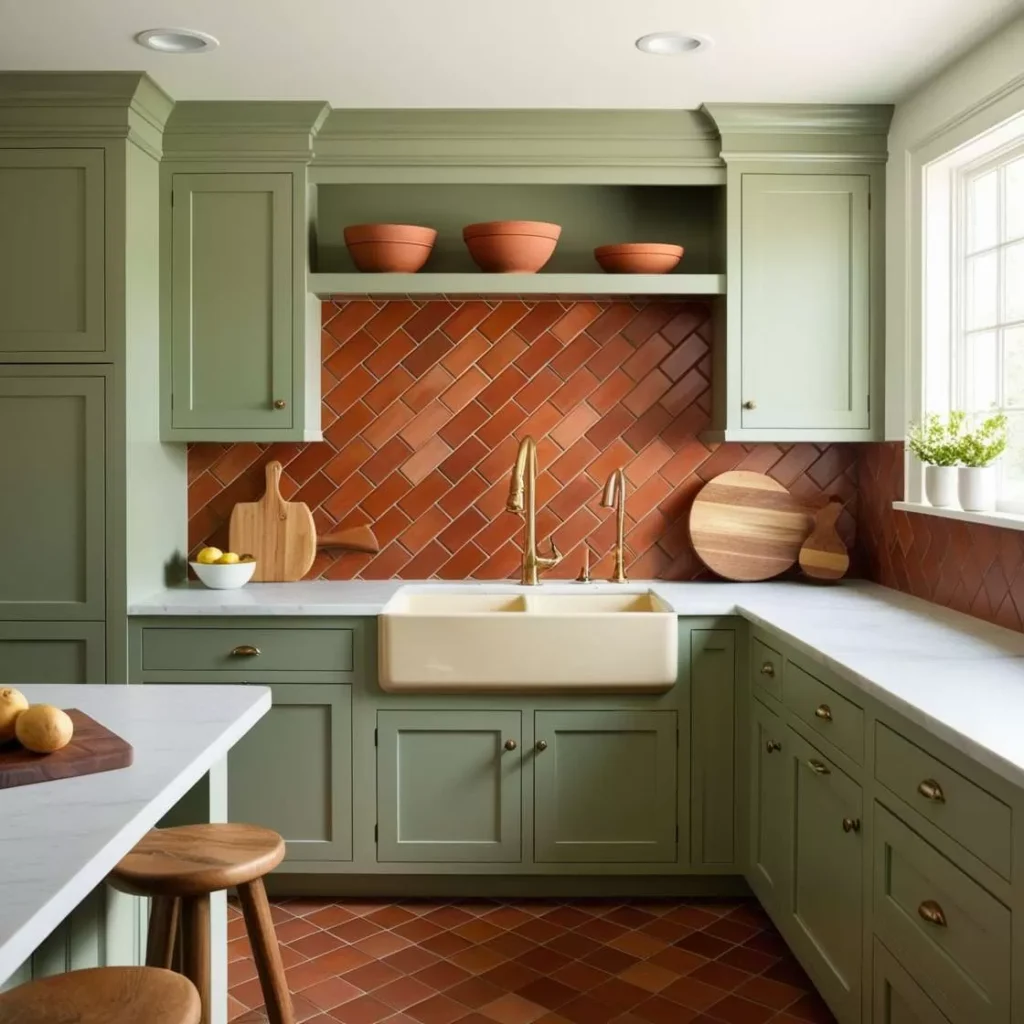
Terracotta pots displayed against sage green create this amazing earthy scheme. The warm orange-brown clay pops against cool sage while both share that natural, from-the-earth quality. Whether they’re holding herbs on your counter or displayed on open shelving, terracotta brings warmth and texture.
Creating this look is simple, collect terracotta pots in varying sizes and shapes. Some with aged patina add extra character. Group them in odd numbers for the pleasing arrangement. Fill with herbs for both beauty and function like rosemary, thyme and basil look the best.
I’m absolutely crazy about lining up terracotta pots along a window sill in front of sage green cabinets, the contrast with the outdoor light is magical. The vintage terracotta vessels at flea markets, old olive jars or French confit pots add age and character. These natural elements soften a kitchen renovation and make the space feel collected.
Wooden floating shelves over the counter
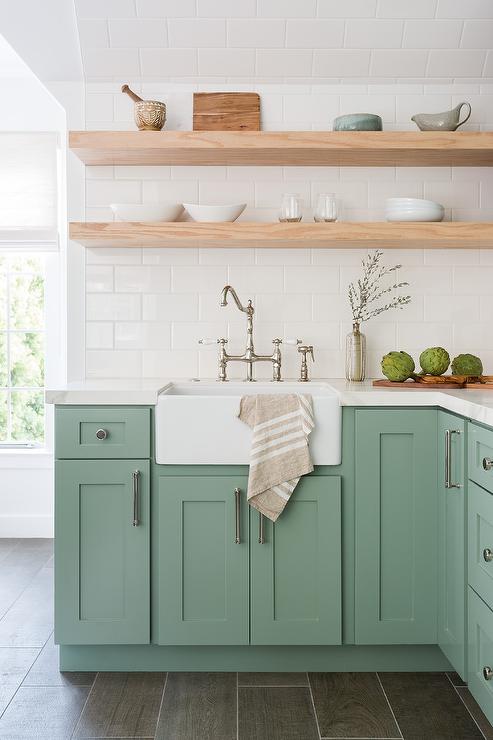
A plate rack mounted over sage green counters or cabinets is a farmhouse perfection. This classic kitchen feature shows off plates while keeping them handy for use. Against sage green, white ironstone or cream pottery pops, creating a display moment.
Installing a plate rack is simple and easy, look for versions that mount directly to the wall or sit on a counter against the wall. For rustic charm, choose one in natural wood or painted white for contrast against the sage.
My favorite approach is mixing plate styles with an element, all white but different patterns, or various muted colors that complement your sage cabinets. The variation feels collected over time. This addition brings both function and beauty to your kitchen. It’s the perfect rustic touch that makes your sage kitchen feel like it has a history.
Copper containers storage as a focal point
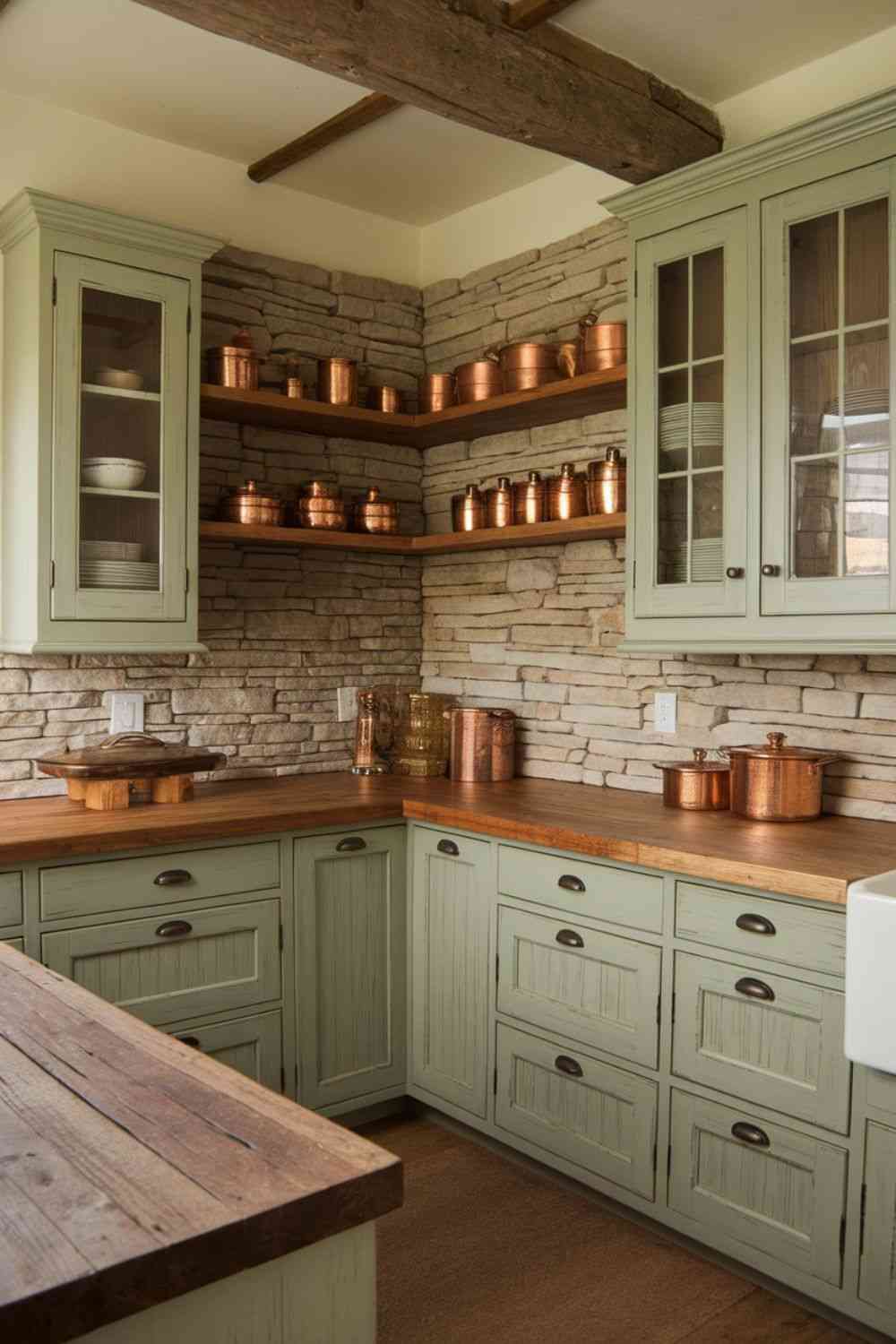
copper containers against sage green cabinets create an amazing color-meets-texture look. Filled with pantry staples like pasta, beans, or flour, they bring storage and visual interest. The blue-tinted glass complements sage perfectly.
Setting up this look is simple: collect various sizes of mason jars and fill them with dry goods. Group them on open shelving against sage walls, or clear a section of countertop for a pantry station.
I love how the transparency of glass breaks up solid blocks of sage cabinetry, creating room without adding competing colors. For charm, mix in a large vintage canning jars or some wire bail tops, the variety in shapes keeps things interesting. This storage solution is practical and pretty.
Monochromatic with different greens

Playing with various green tones creates this amazing layered, designer look. Imagine sage green cabinets with a dark green look, or olive green open shelving against sage walls. The tonal variations add depth while keeping harmony.
To nail this look, stick with the same color, all greens with gray undertones. Try sage cabinets with a deep forest green on a pantry door, or light mint green tiles with your sage cabinetry. The key is that all your greens have similar undertones so they play together.
I’m obsessed with how this approach creates a rich visual texture. My favorite combination is three green tones – light, medium, and dark used accordingly. This creates perfect balance while being interesting. Balance all green with natural wood and white or cream to prevent color overload.
Budget-friendly tips for small sage green kitchen
If you are working in a small kitchen and a budget then you should consider these tips. Paint is what you need, basic cabinets look customised when painted in sage green. Opt for a quality cabinet paint that hardens nicely like Benjamin Moore Advance is worth the splurge.
Hardware makes a HUGE impact for minimal cost. Swapping out standard pulls for antique brass or matte black elevates newly-painted sage cabinets. Look for multi-packs online to save more.
Another budget-friendly idea is Peel-and-stick backsplash tiles in cream or white, they’ve come a long way in quality and give you that fresh look with small expense.
Small kitchens showcase sage green beautifully because the color doesn’t overwhelm tight spaces. To maximize your small sage kitchen, use glass-front upper cabinets or open shelving, it creates depth and prevents the space from feeling closed-in.
Add a mirror or two to bounce light around, and keep countertops clear for prep space. Small sage kitchens can absolutely pack style without going out of your budget.
Conclusion
Isn’t it amazing how rustic sage green kitchen cabinets can transform a space. Whether you’re going with distressed finishes and open shelving, or adding subtle sage accents, this versatile color creates a peaceful, nature-connected space.
The best part is sage green has staying power for a long time and it’s not a trendy color that’ll look outdated after sometime. And addition of other elements makes it memorable and calming.
I hope these 23 ideas inspire you and show how adaptable sage green can be. From bold two-tone designs to subtle monochromatic ones, there’s a sage green kitchen that matches your style and space.
And remember the budget tips I shared with you for small kitchens because sometimes simple changes make a big impact.
Now it’s your turn to bring sage-green serenity into the space. It creates an aesthetic look with serenity and also combined with different colors makes it more appealing and avoids it looking cold.











